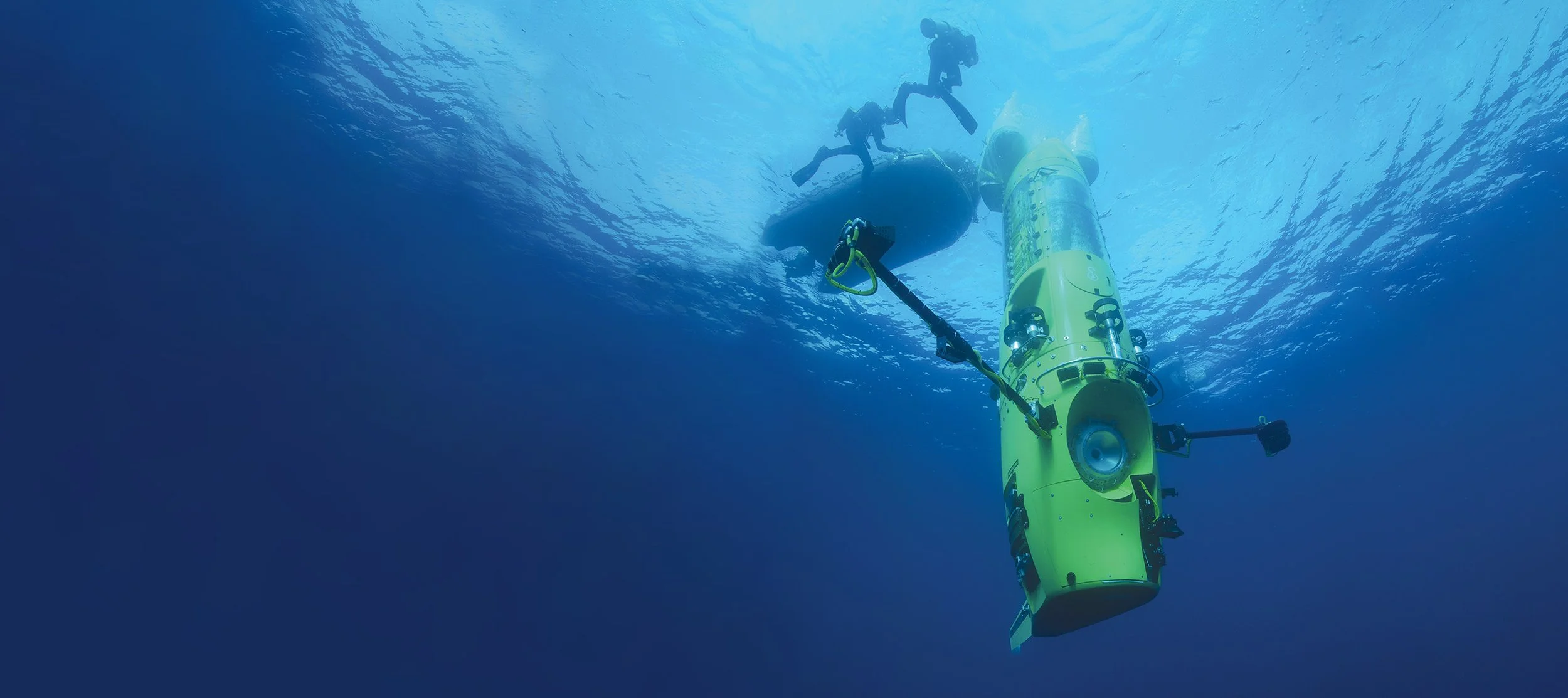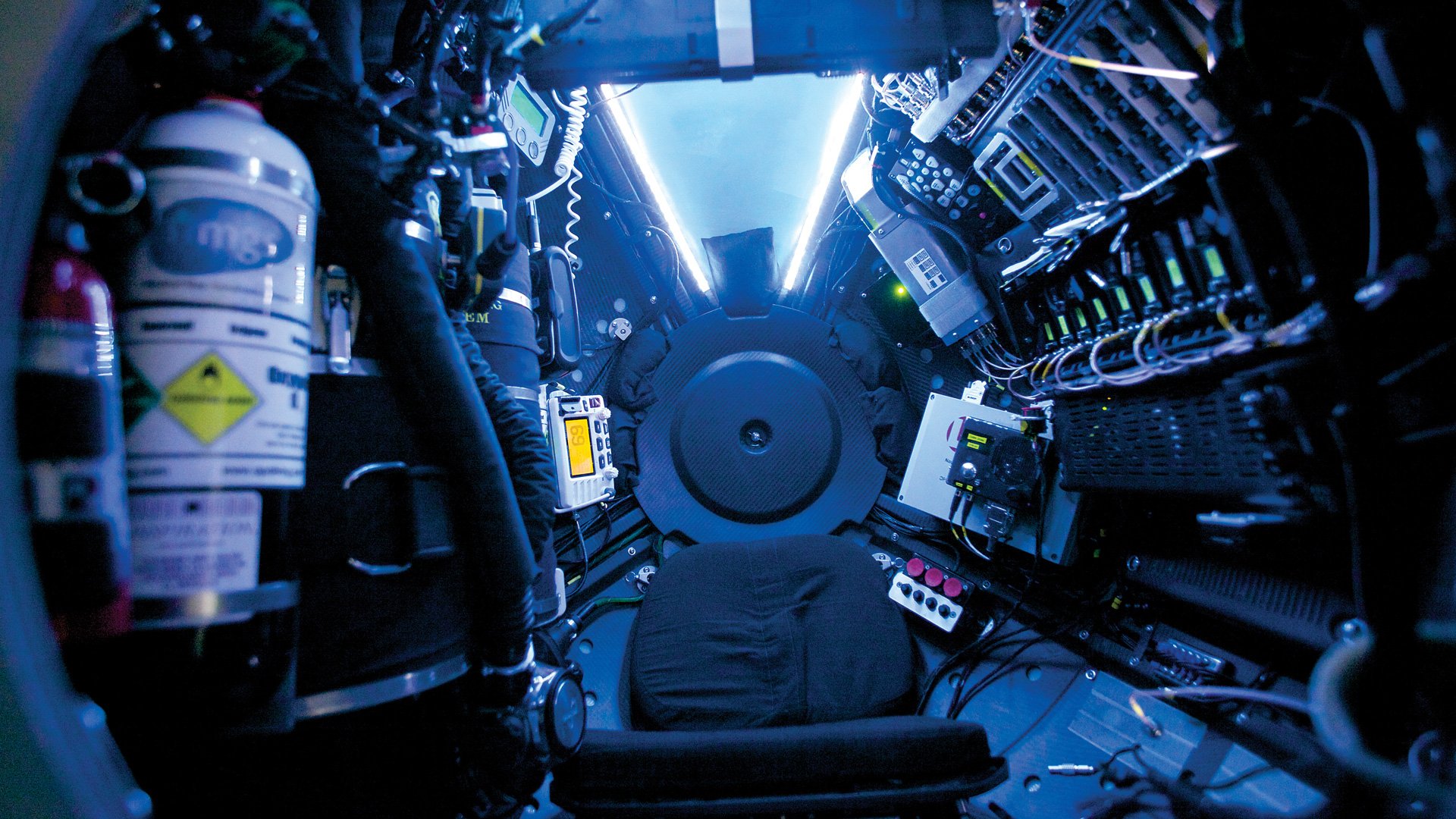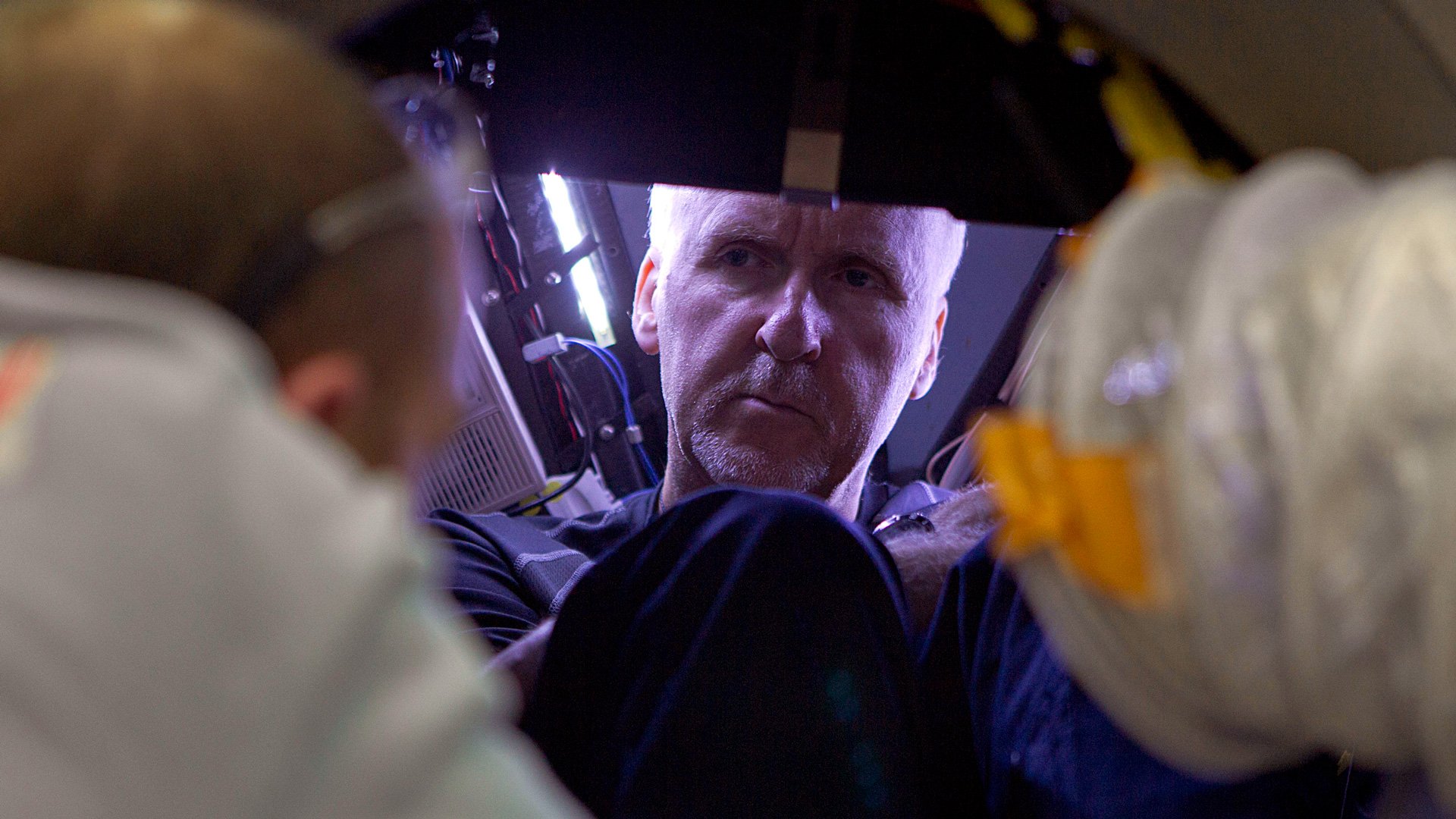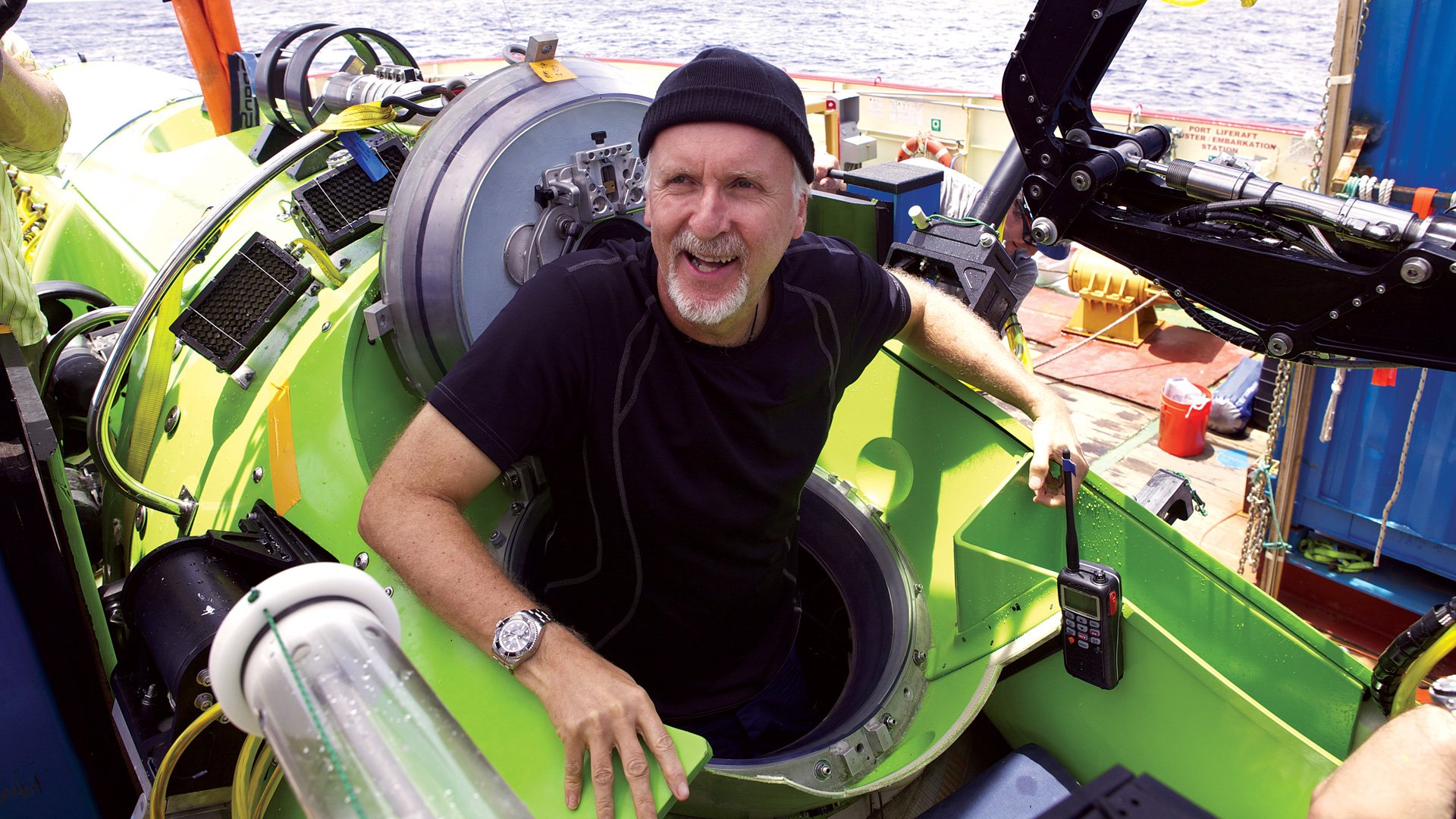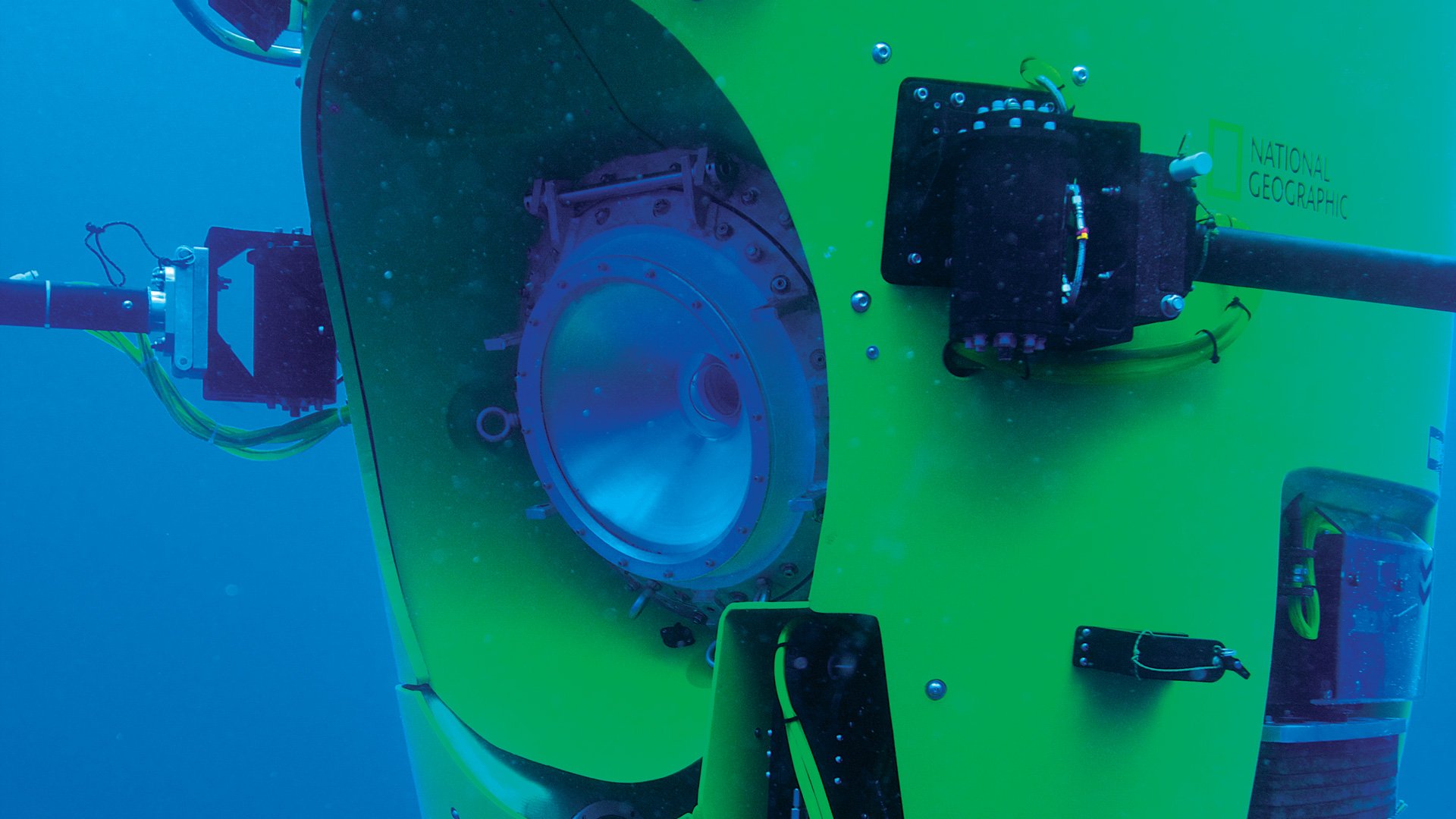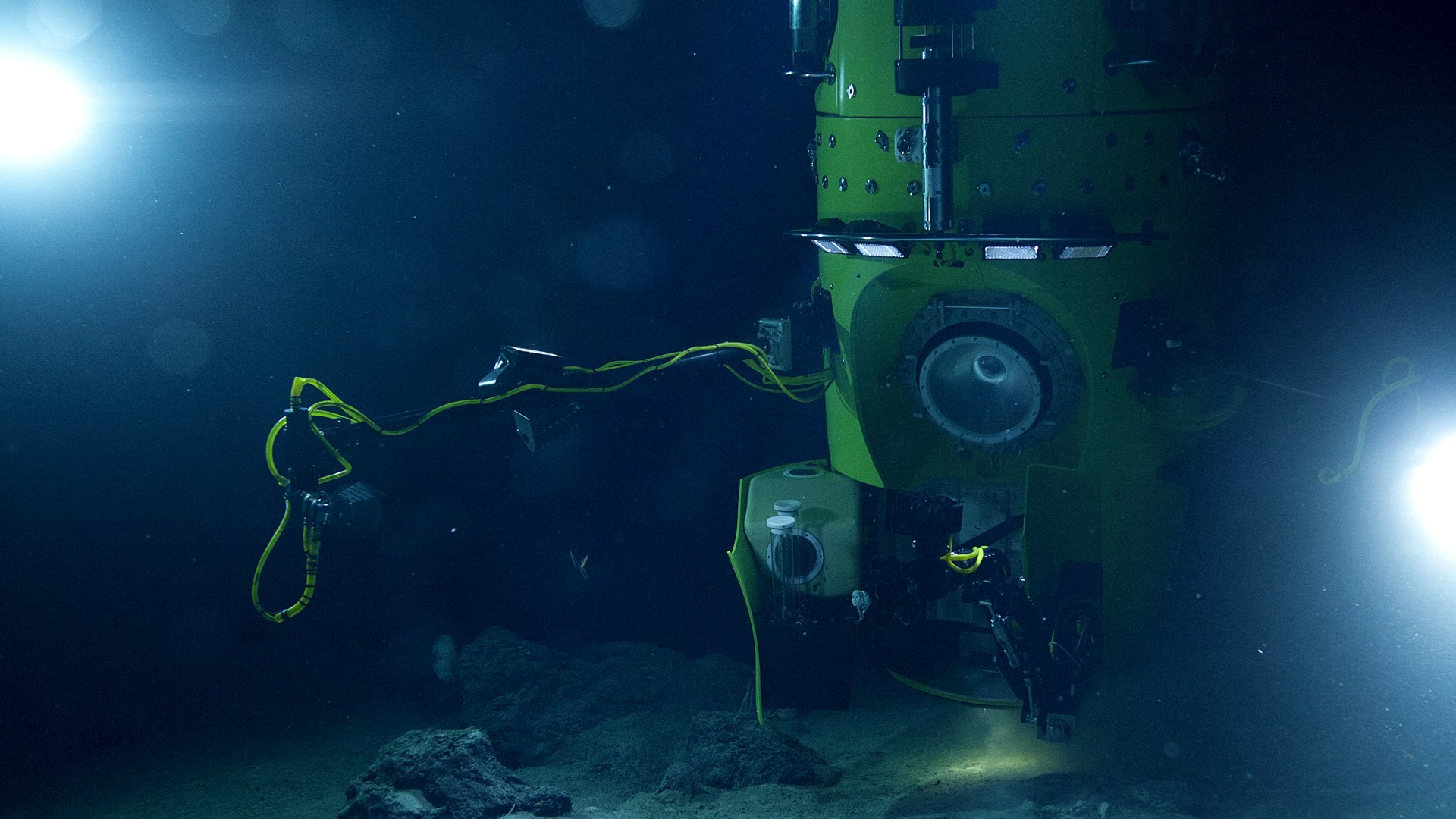10th Anniversary of the Deepsea Challenge
DEEPSEA CHALLENGER
Celebrating the 10th Anniversary of the Challenger Deep Dive
Celebrating the 10th Anniversary of the historic dive to the deepest point in ocean, the journey to the bottom of the Mariana Trench. The historic expedition to the Mariana Trench’s lowest point, the Challenger Deep, which lies 6.83 miles (10.99 kilometers) below the ocean surface, was the first extensive scientific exploration in a manned submersible of the deepest spot on Earth. On March 26, 2012, James Cameron successfully piloted the DEEPSEA CHALLENGER—outfitted for scientific exploration—to the ocean's deepest point, where he collected samples and documented the experience. On March 26, 2022, James Cameron reflected on the expedition and thanked the ‘group genius’ of everyone involved in this massive feat to build, launch, and make the journey to the bottom of the trench a success.
About the Submersible:
Deepsea Challenger is a single occupant research submersible engineered and built in Australia by director James Cameron and Ron Allum from Acheron Project. The 12 ton sub is designed to access the darkest corners of the ocean where depths exceed 11km straight down, deeper than Mount Everest is high. The challenges faced were comparable to those in space exploration – critical attention was paid to the physics of deep-water pressure, to the requirements of exploring the bottom of the ocean and to the complete safety of the pilot.
Critical to the Deepsea Challenger missions is the speed with which it can descend and ascend, while still being able to explore the sea bed and traverse canyon walls. The orientation of the Deepsea Challenger was derived to slice through the water vertically. Once at the bottom, the sub is able to manoeuvre in all directions and pivot on its axis using combinations of its 12 thrusters.
The Deepsea Challenger features 4 external cameras, an IMAX-quality Red Epic camera positioned behind a 300mm thick conical acrylic lens and 2 HD cameras filming the pilot. Lighting for filming is provided by large banks of powerful LEDs. A manipulator arm, core sampling equipment and a remotely operated vehicle are able to be utilised by the pilot to sample and explore the terrain. Powering all this is an innovative system of lithium-ion battery cells captured in silicon oil filled enclosures. These enclosures feature a unique bladder system that compensates for the compression of the oil at depth.
The Pilot Sphere features a narrow 44cm hatch opening for the pilot to enter and all equipment to be assembled through. The Sphere’s 1.1m diameter was found to be a minimum size for a single pilot with the sub controls and life support either side. The Sphere provides a constant sea level pressure of 1 atmosphere inside while withstanding the 16,500psi pressure outside. The internal air is regulated via 2 oxygen supply and carbon dioxide removal systems, one of which is kept as redundancy and features a full face mask in the event of a fire.
The overall size is dictated by the heaviest component, the Life Support Sphere, made from 6.4cm steel to withstand the crushing pressure during the dive. The surrounding 7.3m foam structure of the Beam was calculated to compensate for the Sphere’s weight and keep the sub buoyant. About 70 percent of the sub’s volume is taken up by syntactic foam. Lead engineer Ron Allum spent 18 months designing a patented type of foam, ISOFLOAT™.
With just enough room for a pilot to sit with his knees bent up the internal layout needed to be meticulously developed for safety and functionally. The Shell features sprung mechanisms designed to compress with the Sphere while maintaining structural integrity. The Shell protects the pilot and electrical equipment from condensation that forms inside the steel Sphere. Gutters guide the condensation to the base of the Sphere where the pilot is able to safely store the water using a pump. The Shell also keeps the pilot out of contact with the Sphere surface, which can reach freezing during the dive.
The sphere’s interior is covered with electronics, screens, circuit breakers, and tanks. The pilot’s seat perches above a set of emergency batteries. To his right canisters and tanks absorb carbon dioxide and release oxygen, and to his left the dashboard offers an array of buttons controlling everything from power to communications. Inches from the pilot’s face a screen projects images captured by a Red Epic 5K camera that generates a wide-angle view—better than what the pilot could see with his eyes—from the narrow end of the sphere’s cone-shaped window. A touch screen next to the “virtual viewport” helps him monitor everything from battery power to oxygen levels. The interior also includes food, water, and joysticks connected to the “thrusters,” essentially motors that help the sub move horizontally and vertically.
D+I and the Deepsea Challenge:
D+I were selected by James Cameron and Ron Allum as the Australian industrial design team responsible for developing the cockpit layout for the Deepsea Challenger’s record dive. With such tremendous depths and extreme pressure involved, the success of the project hinged on our ability to minimise risk and keep the pilot safe. The Internal Pilot Sphere consisted of several integrated systems that allowed the sub to be operated and kept the pilot alive. The design brief was to fit 140 complex operating systems inside 43’ diameter sphere - a space equivalent to an average sized fridge. At 11km below the oceans surface—There was no room for error: In developing the cockpit layout for the sub, the D+I team worked with pilots, oceanographers and medical specialists to understand and anticipate risks, incorporate human behaviour variables and overcome significant engineering challenges. Coordinating complex variables and constraints — a fire would mean the pilot couldn’t breathe or see, too much weight would compromise the sub’s finely-tuned buoyancy, any moisture build-up could cause critical systems to fail, and excessive fatigue or discomfort would affect the pilot’s ability to control the dive. It has been generally accepted (by Woods Hole and other major Oceanographic Institutions) that the Deepsea Challenger pilot sphere set a new standard in the submersible industry.
“It is an honour for D+I to play a critical role in the design, engineering and production of the Deepsea Challenger. Contributing to this historic feat of exploration is one of our proudest achievements.” - Murray Hunter, Founder D+I.
We join James Cameron, Ron Allum and everyone involved in the Acheron Project in celebrating the 10th Anniversary of this historic expedition.
History: Sea Museum - Pilot Spheres ➝
© 2022 DEEPSEA CHALLENGER, National Geographic. Photography: Mark Thiessen / National Geographic. All rights reserved.

